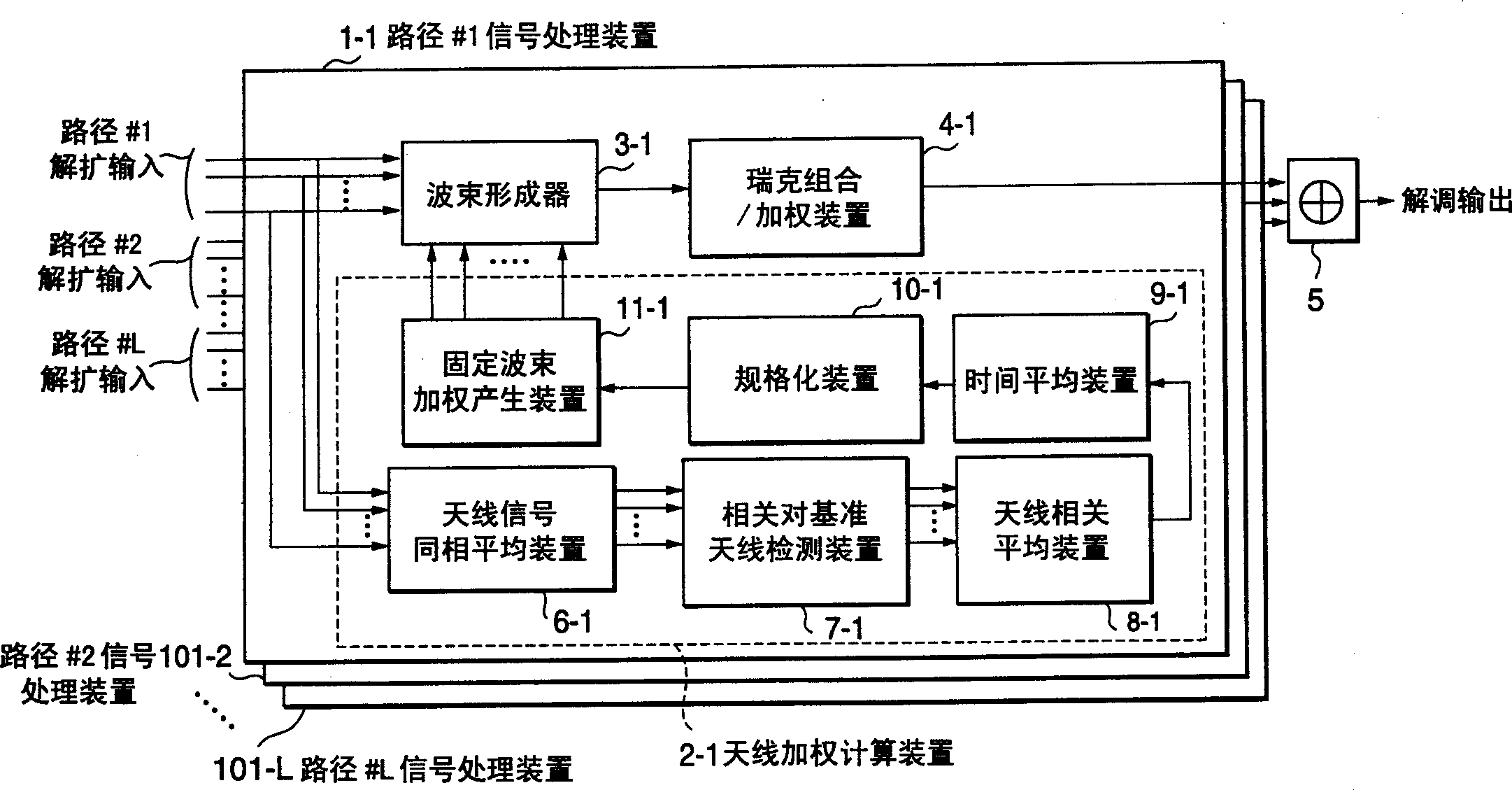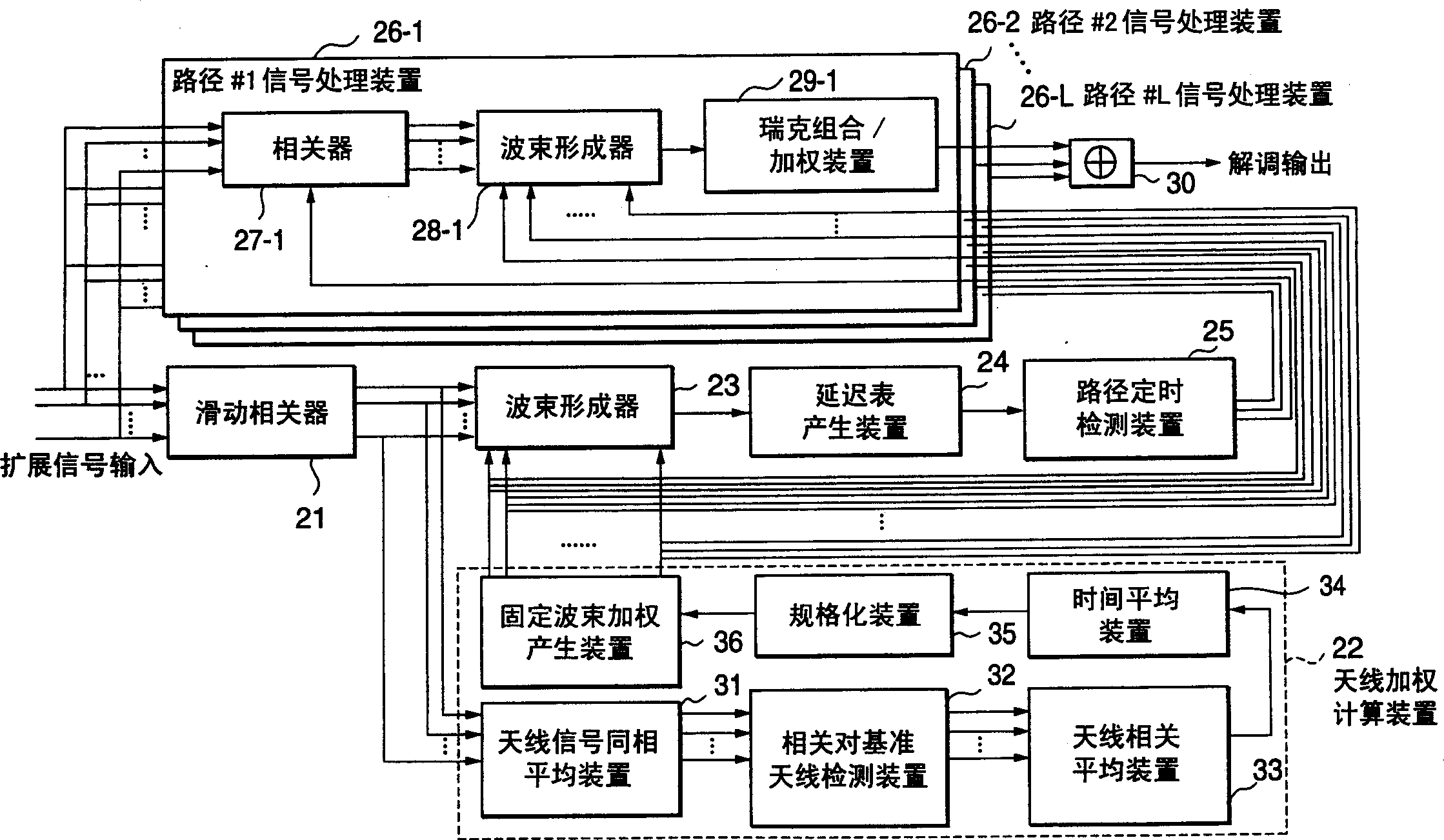Adaptive antenna receiving unit
An adaptive antenna and receiving device technology, which is applied in antennas, selection devices, diversity/multi-antenna systems, etc., can solve the problem of reduced beam band interference suppression characteristics and achieve good interference suppression characteristics
- Summary
- Abstract
- Description
- Claims
- Application Information
AI Technical Summary
Problems solved by technology
Method used
Image
Examples
no. 1 example
[0054] The following reference figure 2 A first embodiment of the present invention will be described. A first adaptive antenna receiving apparatus according to the present invention has path signal processing means 1-1 to 1-L for receiving and demodulating CDMA signals corresponding to multipath transmission paths in a mobile communication environment. That is, when there are L (L is a positive integer) multipath transmission paths, L path signal processing devices are configured.
[0055] This adaptive antenna receiving device has path signal processing devices 1 - 1 to 1 -L and a combiner 5 .
[0056] The path signal processing means 1-1 to 1-L respectively have antenna weight calculation means 2-1 to 2-L, beamformers 3-1 to 3-L, and rake combining / weighting means 4-1 to 4-L . The path signal processing device 1-1 corresponding to path #1 will be described below. This explanation can also be applied to the path signal processing devices 1-2 to 1-L.
[0057] Antenna we...
no. 2 example
[0103] Refer below image 3 A second adaptive antenna receiving apparatus according to a second embodiment of the present invention will be described.
[0104] As described above, in the first adaptive antenna receiving device, in the demodulation / reception section, antenna weights are calculated by the antenna weight calculation means 2-1 to 2-L, and beamforming is performed on demodulated signals. The despread signal is received at the corresponding path timing independently calculated on the input side of the demodulation / reception section (path signal processing means). In this case, any method can be used to calculate the per-path timing.
[0105] In contrast, in the second adaptive antenna receiving apparatus, antenna weights are calculated simultaneously with path timing calculations, and path timing is detected using a beamforming signal. Also in the demodulation / reception section, beamforming is performed at detected path timing using antenna weighting. This will b...
PUM
 Login to View More
Login to View More Abstract
Description
Claims
Application Information
 Login to View More
Login to View More - R&D
- Intellectual Property
- Life Sciences
- Materials
- Tech Scout
- Unparalleled Data Quality
- Higher Quality Content
- 60% Fewer Hallucinations
Browse by: Latest US Patents, China's latest patents, Technical Efficacy Thesaurus, Application Domain, Technology Topic, Popular Technical Reports.
© 2025 PatSnap. All rights reserved.Legal|Privacy policy|Modern Slavery Act Transparency Statement|Sitemap|About US| Contact US: help@patsnap.com



